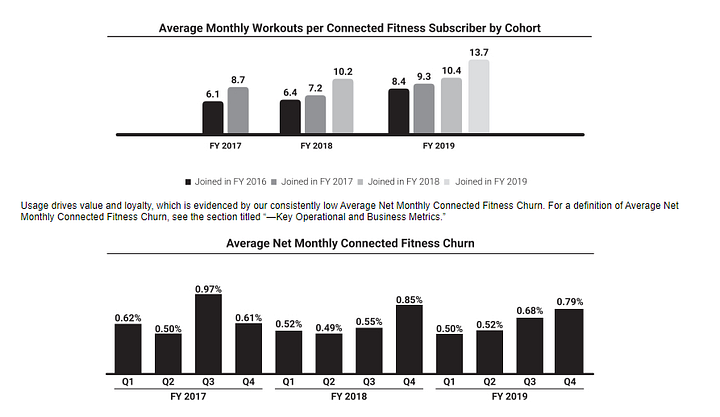Find your churn floor
Peloton’s prospectus (known as an S1) is fantastic in that the company shares a lot of data about the business. One trend however, really jumped out at us: while user engagement is increasing dramatically, churn is not declining. Below is a more detailed graphic which shows the trend. As you can see, old cohorts are increasing their usage and newer cohorts are more prolific users than older cohorts, but churn actually increased over 2019 and there is no long term discernable trend either up or down.

Likewise, the graphic below presents the data more simply on an annual basis. Monthly connected churn has barely moved over three years (0.70% to 0.65% from 2017 to 2019) but workouts per user are up materially from 7.5 per month to 11.5 per month.

So what’s happening? Why isn’t higher user engagement resulting in lower churn? Most likely, Peloton has found its churn floor. In other words no matter how much usage increases or how good a fit the customer is, there will always be some minimum level of churn. ‘Churn zero’ for any company is impossible, so find you churn floor as soon as you can, figure out whether you are there based on usage trends relative to churn trends, and budget for the business accordingly. For reference, Peloton found their churn floor 3 years after launching their first bike.
Visit us at blossomstreetventures.com. Email Sammy directly at with Series A or B opportunities.